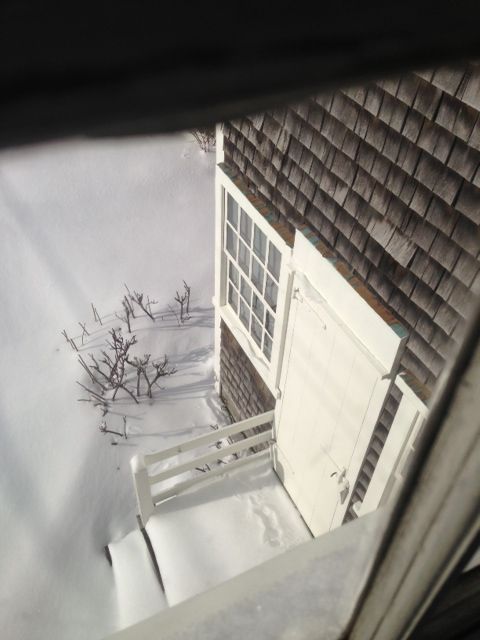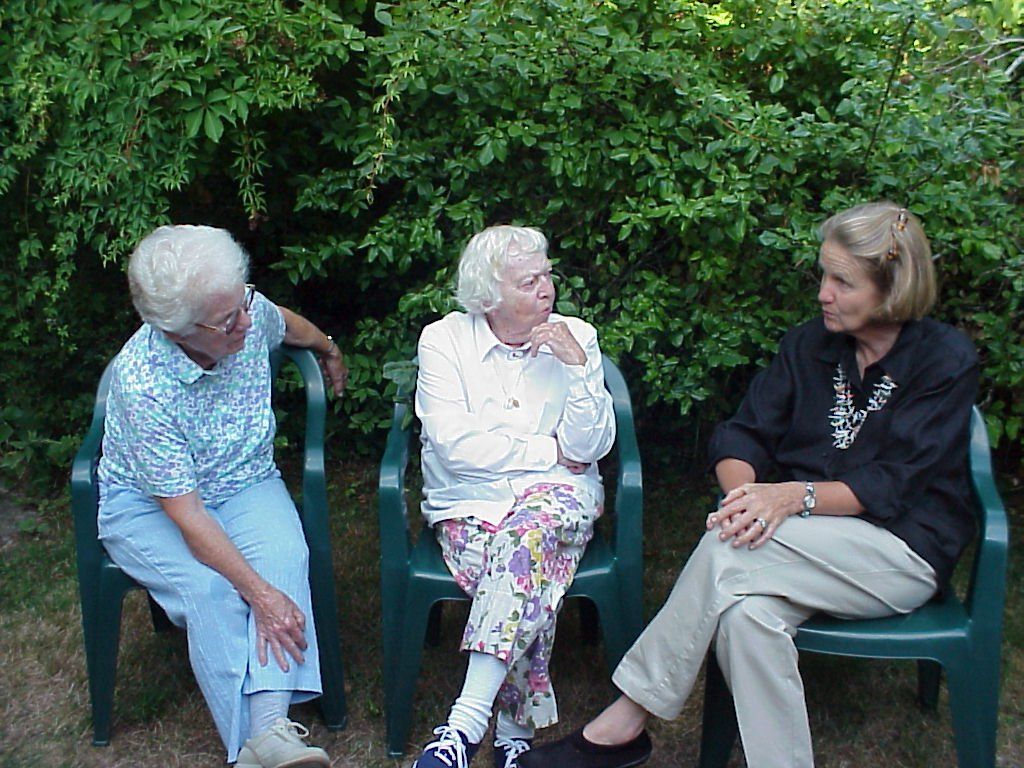M. Jane Stroup
In 2011, the MMA’s former librarian, M. Jane (Jane) Stroup passed away. At that time, I wrote a piece that you can read below. Jane was an integral part of my time at the MMA growing up. I was lucky enough to have her as a friend and as a guide. In fact, growing up at the MMA as I did, I was incredibly lucky to be surrounded by an incredible group of women who served as mentors and friends and who showed me the paths that make up my life today. As I touch something or walk through a space at the MMA or along Vestal Street, I continue to feel their presence and love for this unique organization. It was their work and support that put us where we are today and where we continue to build upon what they did as they continued Maria Mitchell’s legacy. I still hear their voices and laughter (oh, the laughter!) and remember them as they guide me in my work. Recently, Jane’s estate was finalized and closed, and a gift was left by her for the MMA. This bequest is for our endowment and we hope that people will match her generous gift of $50,000.00. I have and hope you will too.
On November 4th {2011}, the MMA lost a dear friend. M. Jane Stroup, Ph.D., known to all as Jane, was the MMA’s first year-round librarian, her tenure running from 1970 through the spring of 1994. Jane was known for her quick wit, her fantastic annual reports presented to the membership in verse, and for being the year-round presence of the MMA for so many years – the Library lights were the only ones on Vestal Street in the MMA complex of buildings. Jane was a lover of the natural world – from birds to wildflowers – capturing these in her sculpture and her poetry. She was a member of the Nantucket Artists Association. An English and Biology major in college, Jane went on to earn her Master’s Degree and then her Ph.D. at New York University. She moved to Nantucket in 1968 and would later also become well-known for the wonderful garden and greenhouse she shared on Candle House Lane with Joan Manley. She was a woman of many talents, gracing all with her humor, love, and incredible knowledge and intelligence.
In 1987, Jane was thanked by the MMA’s president Jane Merrill for her long service to the MMA. In her public thank you, President Merrill said “Although many science libraries have bigger collections than the Maria Mitchell Science Center, none is more friendly, better organized, or better cared for . . . The user is assured of a warm welcome . . . ” She kept the history of the MMA alive and enlivened the annual meetings where all awaited her annual report in verse.
In honor of her, we reprint here one of her much anticipated annual reports – this one is from 1978 – and we thank her for all the wonderful years she gave to the MMA. Those of us who knew her, those who were lucky to have been touched by her – and even appear in her annual report – will miss her.
Annual Meeting 1978
Listen, dear members, and you shall hear
Of a most exciting library year.
The Winter of seventy seven and eight,
Our doors were open early and late.
Folks came from far and near.
They wanted to know of the sun and stars,
Solar heat, black holes and life on Mars,
Lasers and quasars and quarks and charms
Kept the Librarian full of alarms!
How did the universe ever get going
Could be beyond a poor mortals knowing.
How it will end is full of conjecture
Suitable stuff for an M. M. lecture.
The snow was swept, and the birds were fed
The goldfish slept in their icy bed.
Nice Mr. Lucas took our picture,
So now we’ve become a permanent fixture.
The birders were busy as they could be
Spotting the birds on land and sea
Indeed one study, it is said,
Even counted those birds long dead!
Spring brought the tourists who like to come early
But finding things closed are apt to become surly
It was Library Week across the nation
So we cheered them up with a celebration
Real live authors and cookies and punch
Made for a lively bunch.
Then snowdrops and crocuses started blooming
And Library business started booming!
What is that tree that grows so tall?
What is that bird that looks so small?
What is that flower that grows by the road?
How do you tell a frog from a toad?
Why does the tide go in and out?
What is ethology all about?
We searched the books, and we shared a laugh,
And prayed for return of the Hinchman staff!
The Library silence turns to noise
As Dorrit arrives with her girls and boys.
The Birthplace door is opened wide,
And Edith’s arranging flowers inside.
Eileen is tromping across the yard,
Bringing another lecture card.
Sure signs of Summer . . . the Librarian’s sneeze.
And the annual swarm of the Library bees.
JNLF
Recent Posts





